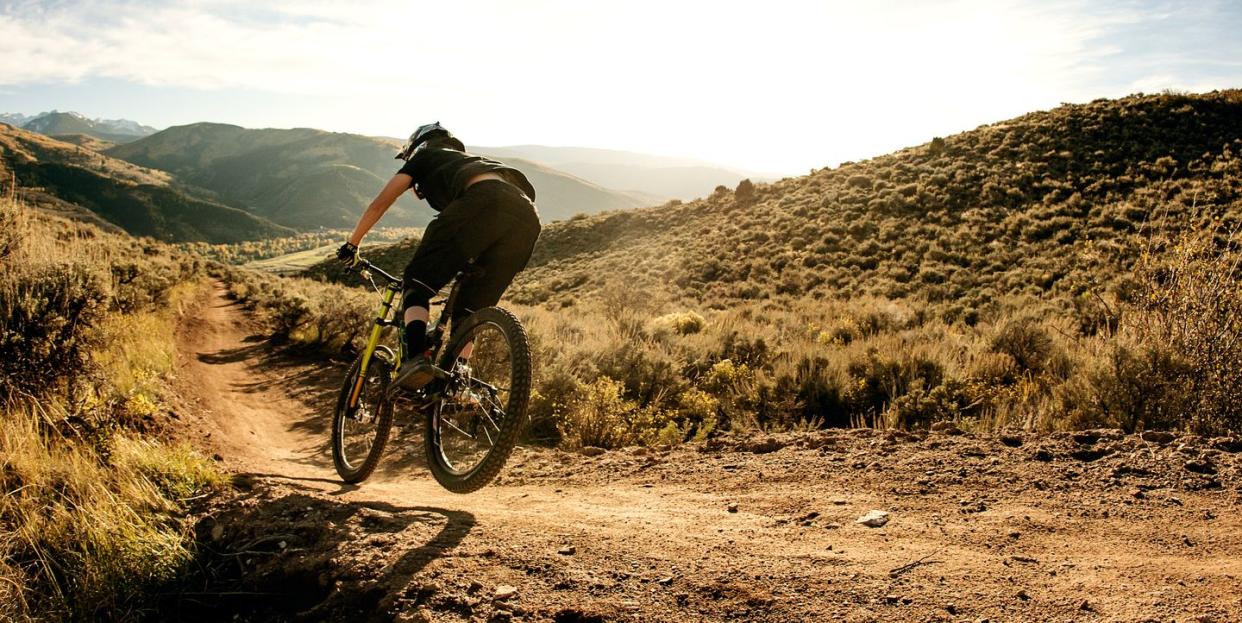Your Body Can Produce Its Own Form of Molecular SPF, Thanks to Vitamin D Genes

According to a new study in the journal Nature Communications, there are genes in your body that can produce vitamin D and provide a “natural” sunscreen.
However, just because our bodies make this natural sunscreen doesn’t mean you can skimp on the store-bought stuff when going out for a ride, since sun exposure is associated with skin cancer.
Fueling your body with the proper nutrients is key to riding your best. One of the most important? Vitamin D, which is essential to building and maintaining strong, healthy bones. And while there are plenty of ways to get vitamin D—the sun, certain foods, and supplements—new research suggests there are variants in your body’s genes that can predict the production of it, too.
In the study, published in the journal Nature Communications, researchers analyzed the genotype (the genetic makeup of a person), phenotype (the physical characteristics of a person due to their genes), and other clinical information from 417,580 people registered with the U.K. Biobank, an ongoing study in the United Kingdom with the goal of improving the prevention, diagnosis, and treatment of various illnesses and diseases.
Vitamin D 25OHD levels—a.k.a. the best marker of a person’s vitamin D status—were measured at two points in time: during the initial assessment visit, conducted between 2006 and ’10; and during a repeat assessment visit, conducted between 2012 and ’13.
The researchers found that there were 143 gene locations linked to vitamin D concentration—137 more than they knew about prior to this study. These genes can create a natural sunblock at the molecular level, according to researchers, which makes it harder to produce Vitamin D.
“Vitamin D is the sunshine hormone, and we need bright sunshine on the skin to make it, but variations in our genes also influence how efficient we are at doing that,” John McGrath, M.D., Ph.D., conjoint professor at the Queensland Brain Institute in Australia, said in a press release. “Our findings suggest that genetic variants in the HAL (histidine ammonia-lyase) gene can vary the concentration of a small molecule in the skin which acts like an internal Sun Protection Factor, or SPF.”
This small molecule absorbs UVB light—which is what our bodies use to make vitamin D—and the amount of it in our skin affects how much vitamin D we can make, according to the press release.
“Everyone has these genes—which make proteins in the skin—but, there are variants,” McGrath told Runner’s World. “Some people have variants that make less internal sunblock, so it is slightly easier for these people to make vitamin D.”
These genes make proteins that influence vitamin D many different ways, according to McGrath.
“We found variations in enzymes that make and break down vitamin D and carrier proteins that transport it. We found many variants in genes related to lipids and skin, so they show many new factors that influence vitamin D. Of course, you still must have sunshine on the skin—or oral supplements, etc.,” he said.
But just because our bodies make this natural sunscreen doesn’t mean you can skimp on the store-bought stuff when going out for a ride.
“Sun exposure is associated with skin cancers, so we need to wear a good SPF—greater than 50 SPF—if in the bright sunshine,” McGrath said.
[Find 52 weeks of tips and motivation, with space to fill in your mileage and favorite routes, with the Bicycling Training Journal.]
But if you work indoors, which many of us do, and don’t get a ton of sunshine, McGrath recommends a supplement. If you suspect you’re deficient in vitamin D, see your doctor, who can test your levels and advise on how much of the nutrient you need to add to your diet—the National Institutes of Health recommends 600 international units of vitamin D per day. (And, for what it’s worth, foods such as sockeye salmon, trout, and milk can help boost your levels, too.)
You Might Also Like